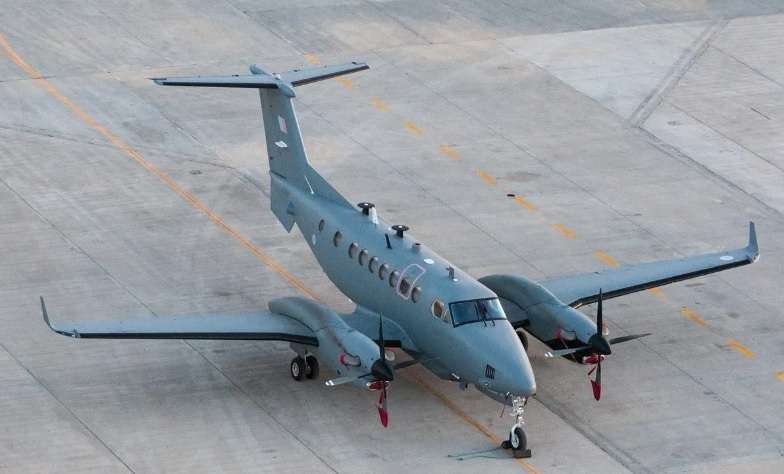The Drug Enforcement Administration (DEA) has taken back to the US a plane that used in Mexico for counternarcotics operations for the first time in decades after Mexican officials took away the parking space for this aircraft.
The measure is a new blow to joint cooperation against drug trafficking, which has worn thin in recent years.
The DEA has had its own aircraft in Toluca, near Mexico City, since the early 1990s to carry out missions against the cartels, transporting US agents and elite Mexican units to oversee operations that must be carried out quickly in the Latin American nation.
The current plane, a twin-turbine King Air with a capacity for about 10 people, played a key role in capturing some of the world’s most powerful drug lords and was used in operations against former Sinaloa cartel boss Joaquín Chapo Guzman. It also served for DEA maneuvers in Central America.
According to a US government official and two security sources familiar with the matter, the plane has been flown to Texas. All three requested anonymity because they were not authorized to discuss the matter.
This will make things very difficult for the DEA, we can’t get through parts of Mexico, it’s too dangerous,” said one of the security sources familiar with DEA operations.
The DEA declined to comment on the matter. The Attorney General’s Office (FGR) did not respond to requests for comment.
The removal of the aircraft threatens to undermine US efforts to combat organized crime groups inside Mexico and risks delaying the extraditions of high-ranking drug lords.
Last month, AMLO disbanded a select anti-narcotics unit that for a quarter-century worked hand-in-hand with the DEA to combat cartels.
Despite the sharp reduction in counternarcotics cooperation, some US officials say it has improved since the near-total breakdown in October 2020, when US authorities arrested former Mexican army chief, Salvador Cienfuegos, for allegedly receiving bribes from a drug cartel.
The use of the plane slowed in 2019 after the Defense Secretary, which controls the airspace, began requiring a written request from the US government two weeks before any flight.
This made many missions unfeasible due to the need for flexibility and speed, the security source said, but DEA appeals to the Mexican Foreign Ministry were in vain and use of the aircraft was halted.
Then, about a month ago, the DEA moved the plane after the FGR asked the agency to give up its parking space in its hangar at the Toluca airport, according to a US government official.
Former and current US officials said the plane’s absence would make the DEA’s work more difficult, pointing out the aircraft’s critical role in transporting Mexico’s top police officers, elite Navy special forces, and their equipment for major operations.
The plane was invaluable for our missions,” said Leonardo Silva, a former DEA agent who served in Mexico. “It is very important for the DEA to be able to function and be effective in Mexico,” he stressed.
With two DEA pilots on standby at all times, the plane has also been instrumental in rescuing US agents facing death threats, such as the case when the Zetas cartel in Central Mexico killed a U.S. Homeland Security Investigations agent and chased after his injured colleague, Víctor Ávila, who had to be airlifted out.
“Extraditions of traffickers are also likely to be in jeopardy because the DEA often only has a matter of hours to get cartel bosses abroad before their lawyers make it difficult through legal action”, said a former high-ranking agent. DEA level who worked in Mexico.
Drug cartels waging turf wars over trafficking routes have pushed Mexico’s murder rate to over 30,000 a year. In the United States, new hyper potent drugs produced by Mexican cartels have triggered a sharp rise in overdoses that led to more than 100,000 deaths in the United States last year.
San Miguel Times
Newsroom

